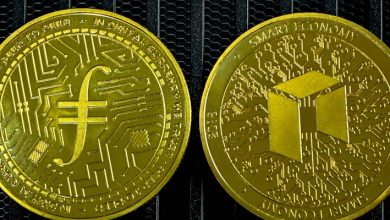How to Assess the Security of a Crypto Token’s Blockchain

- Understanding the basics of blockchain security
- Key factors to consider when assessing the security of a crypto token’s blockchain
- Common vulnerabilities in blockchain networks and how to spot them
- Tools and techniques for evaluating the security of a blockchain
- Best practices for conducting a thorough security assessment of a crypto token’s blockchain
- The importance of continuous monitoring and updates for blockchain security
Understanding the basics of blockchain security
When assessing the security of a crypto token’s blockchain, it is crucial to understand the basics of blockchain security. Blockchain technology relies on a decentralized network of nodes to verify and record transactions securely. The security of a blockchain is maintained through cryptographic principles and consensus mechanisms.
One key aspect of blockchain security is immutability, which means that once a transaction is recorded on the blockchain, it cannot be altered or deleted. This ensures the integrity of the data and prevents unauthorized manipulation. Another important feature is transparency, as all transactions on the blockchain are visible to all participants, enhancing trust and accountability.
Blockchain security also relies on encryption to protect data and prevent unauthorized access. Public and private keys are used to authenticate transactions and ensure that only authorized users can access and modify data. Additionally, consensus mechanisms such as proof of work or proof of stake are used to validate transactions and secure the network against malicious attacks.
Overall, understanding the fundamentals of blockchain security is essential when evaluating the security of a crypto token’s blockchain. By considering factors such as immutability, transparency, encryption, and consensus mechanisms, investors can make informed decisions about the security and reliability of a blockchain network.
Key factors to consider when assessing the security of a crypto token’s blockchain
When evaluating the security of a cryptocurrency token’s blockchain, there are several key factors that should be taken into consideration to ensure that the platform is secure and resistant to attacks. One important aspect to look at is the consensus mechanism used by the blockchain. Different cryptocurrencies utilize various consensus algorithms such as Proof of Work (PoW), Proof of Stake (PoS), or Delegated Proof of Stake (DPoS). Each of these mechanisms has its strengths and weaknesses in terms of security and decentralization, so it is crucial to understand how they work and their implications for the network.
Another crucial factor to consider is the level of decentralization of the blockchain. A truly decentralized blockchain is one where no single entity or group has control over the network, making it more resistant to censorship and manipulation. Centralized blockchains, on the other hand, are more vulnerable to attacks and regulatory intervention. Therefore, assessing the degree of decentralization of a crypto token’s blockchain is essential in determining its security and trustworthiness.
Furthermore, the size and activity of the network also play a significant role in the security of a blockchain. A larger and more active network is generally more secure as it has more nodes verifying transactions and securing the network. Additionally, the level of community support and developer activity surrounding the blockchain can also indicate its security and resilience to attacks.
Lastly, the history of the blockchain in terms of security incidents and breaches should be carefully analyzed. A blockchain with a history of hacks or vulnerabilities may not be as secure as one with a clean track record. Therefore, it is essential to conduct thorough research and due diligence on the security history of a crypto token’s blockchain before investing or participating in it. By considering these key factors, investors and users can make informed decisions about the security of a cryptocurrency token’s blockchain.
Common vulnerabilities in blockchain networks and how to spot them
When assessing the security of a crypto token’s blockchain, it is important to be aware of common vulnerabilities that could potentially expose the network to security risks. By understanding these vulnerabilities and knowing how to spot them, investors and users can make more informed decisions when engaging with blockchain technology.
- One common vulnerability in blockchain networks is the presence of smart contract bugs. These bugs can be exploited by malicious actors to steal funds or disrupt the network. To spot smart contract bugs, it is essential to conduct thorough code reviews and audits before deploying any smart contracts on the blockchain.
- Another vulnerability to watch out for is the risk of 51% attacks, where a single entity or group of entities controls the majority of the network’s mining power. This can lead to double-spending attacks and undermine the security of the blockchain. Monitoring network hash rates and staying informed about potential mining centralization can help identify this vulnerability.
- Additionally, insecure private keys pose a significant risk to the security of blockchain networks. If private keys are compromised, attackers can gain unauthorized access to users’ funds and sensitive information. To mitigate this risk, users should store their private keys securely and use hardware wallets or secure storage solutions.
- Lastly, poor network governance and decision-making processes can also weaken the security of a blockchain network. Without proper governance mechanisms in place, it becomes challenging to address security vulnerabilities and implement necessary upgrades. By participating in governance processes and staying informed about network developments, users can help maintain a secure blockchain ecosystem.
Tools and techniques for evaluating the security of a blockchain
One of the essential aspects of assessing the security of a blockchain is using various tools and techniques to evaluate its strengths and weaknesses. By employing these methods, you can gain a better understanding of the potential vulnerabilities within the system and take appropriate measures to mitigate any risks.
One tool that is commonly used for evaluating blockchain security is penetration testing. This involves simulating a cyberattack on the blockchain network to identify any potential entry points for hackers. Penetration testing can help uncover weaknesses in the system’s defenses and allow developers to patch any vulnerabilities before they can be exploited.
Another useful technique for assessing blockchain security is code review. By examining the codebase of the blockchain network, developers can identify any potential bugs or security flaws that may exist. Code review can help ensure that the system is robust and secure, providing peace of mind to users and investors.
In addition to penetration testing and code review, it is also important to consider the overall architecture of the blockchain network. By evaluating the design and structure of the system, developers can identify any potential weaknesses that may exist. This can help prevent security breaches and ensure that the blockchain network remains secure and reliable.
Overall, by using a combination of tools and techniques such as penetration testing, code review, and architectural evaluation, you can assess the security of a blockchain effectively. By identifying and addressing any potential vulnerabilities, you can help ensure that the system remains secure and trustworthy for all users.
Best practices for conducting a thorough security assessment of a crypto token’s blockchain
When conducting a thorough security assessment of a crypto token’s blockchain, there are several best practices that should be followed to ensure comprehensive evaluation and identification of potential vulnerabilities.
- 1. **Code Review:** One of the first steps in assessing blockchain security is to conduct a detailed review of the token’s code. This involves analyzing the smart contracts, consensus mechanisms, and overall architecture to identify any weaknesses or potential exploits.
- 2. **Penetration Testing:** Another crucial aspect of security assessment is penetration testing, which involves simulating real-world cyber attacks to identify vulnerabilities in the blockchain system. This helps in understanding the system’s resilience to potential threats.
- 3. **Network Security:** Ensuring proper network security is essential to protect the blockchain from attacks such as DDoS or 51% attacks. Implementing firewalls, encryption, and regular network monitoring can help enhance the overall security of the system.
- 4. **Secure Key Management:** Proper key management is vital in protecting the assets stored on the blockchain. Implementing secure key storage solutions and following best practices for key generation and distribution can help prevent unauthorized access.
- 5. **Regular Audits:** Conducting regular security audits by third-party experts can provide an independent assessment of the blockchain’s security posture. This can help identify any new vulnerabilities or weaknesses that may have been overlooked.
By following these best practices, crypto token issuers can ensure that their blockchain systems are secure and resilient against potential threats. It is essential to prioritize security assessments to protect both the token holders and the integrity of the blockchain network.
The importance of continuous monitoring and updates for blockchain security
Continuous monitoring and regular updates are crucial for maintaining the security of a blockchain network. By staying vigilant and proactive in identifying potential vulnerabilities, developers can ensure that their crypto token remains secure against potential threats.
One of the main reasons why continuous monitoring is essential is due to the evolving nature of cybersecurity threats. Hackers are constantly developing new techniques to exploit weaknesses in blockchain networks, making it necessary for developers to stay one step ahead by regularly assessing and updating security measures.
Failure to keep up with these updates can leave a blockchain network vulnerable to attacks, potentially resulting in theft of funds or other malicious activities. By prioritizing security updates, developers can significantly reduce the risk of such incidents occurring.
Additionally, continuous monitoring allows for the detection of any unusual activity on the blockchain network, enabling developers to investigate and address potential security breaches promptly. This proactive approach can help prevent more significant security issues from arising in the future.
In conclusion, continuous monitoring and updates are vital components of maintaining the security of a crypto token’s blockchain. By remaining vigilant and proactive in addressing potential vulnerabilities, developers can help safeguard their network against malicious threats and ensure the integrity of their token for users.




